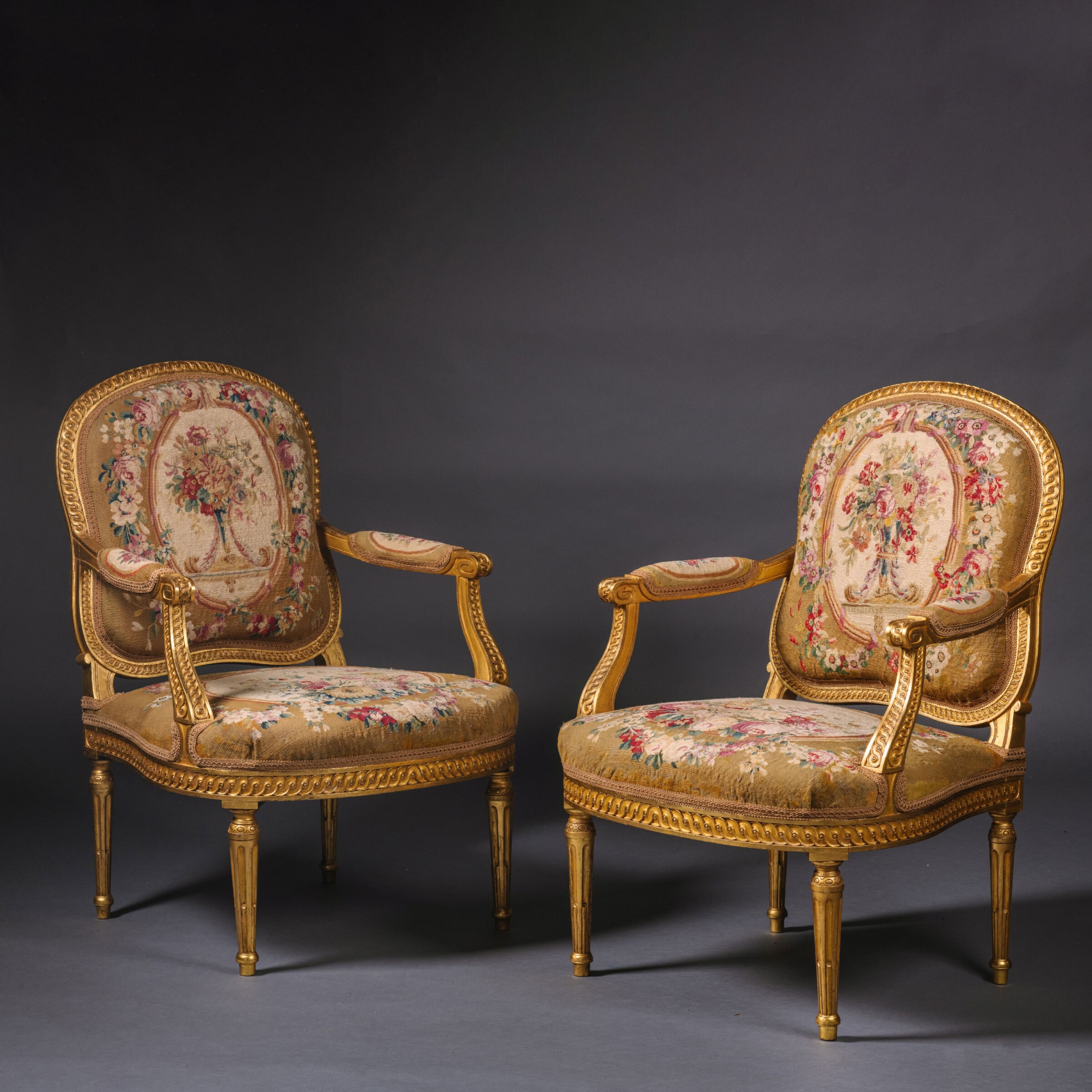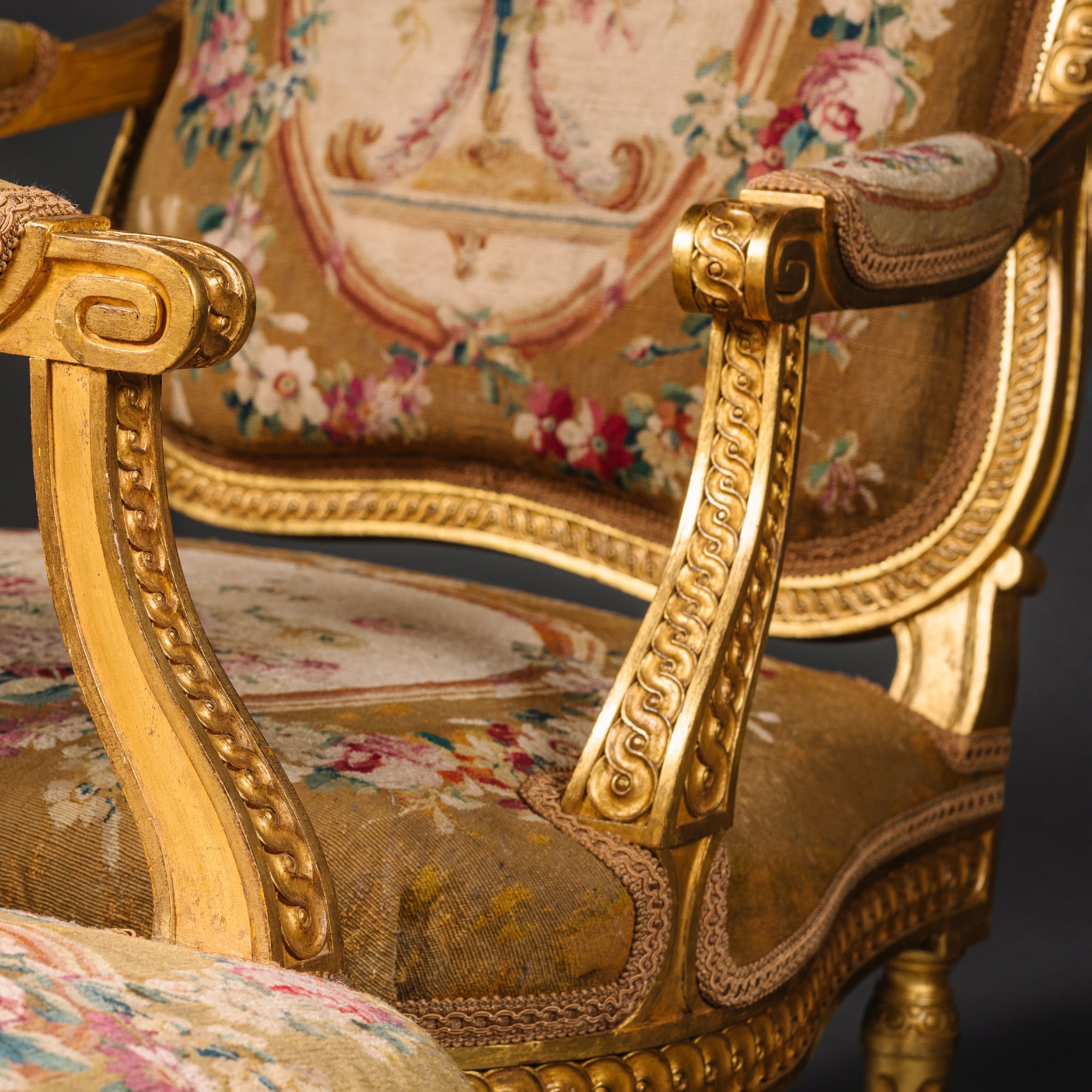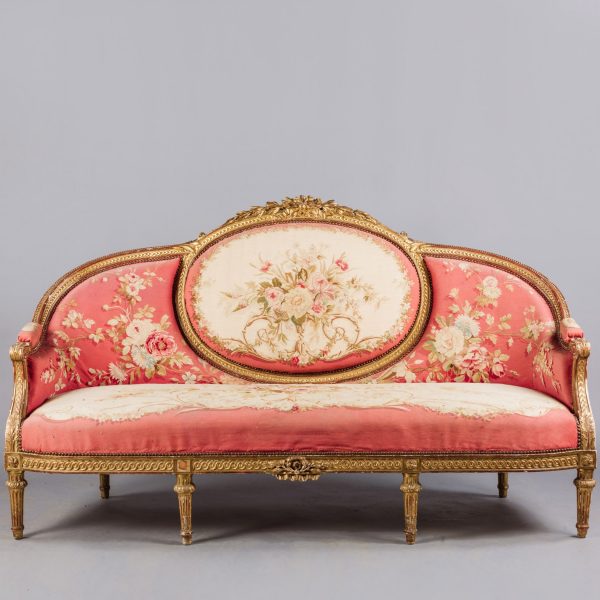A Pair of Louis XVI Style Giltwood and Tapestry Fauteuils
£65,000
A Pair of Louis XVI Style Giltwood and Tapestry Fauteuils The tapestry 18th century and attributed to the Beauvais Manufactory. The frames are finely...
Dimensions
Height: 100 cm (40 in)Width: 69 cm (28 in)
Depth: 61 cm (25 in)
Description
A Pair of Louis XVI Style Giltwood and Tapestry Fauteuils
The tapestry 18th century and attributed to the Beauvais Manufactory. The frames are finely carved with guilloche banding. The rounded back is upholstered in pale yellow coloured tapestry with cream cartouches of floral bouquets surrounded by foliate trails. The tapering legs are carved with stop fluting.
These chairs are conceived in the Transitional style between Louis XV and Louis XVI. The backrests are curved at the sides and thereby reminiscent of the Louis XV style, but only slightly rounded at the top, whereas the guilloche carved frame introduces the repertoire of neoclassicism which would come to define the Louis XVI style.
France, Circa 1870.
Date
Circa 1870
Origin
France
Medium
Carved Giltwood
Comte Hippolyte de La Rochefoucauld (1804-1893) at the Château de Verteuil, Charente, France.
The Château de Verteuil dominates the village of Verteuil-sur-Charente and the Charente valley. The property has belonged to the Rochefoucaulds for a thousand years, having been passed down from generation to generation. The Rochefoucauld family are one of the oldest and most famous of the French nobility. The Château dates back to 1080, was occupied by the English during the Hundred Years’ War (1337-1453) and as a base for Huguenot forces in the 16th and 17th centuries was partly demolished by royal troops. It was rebuilt but damaged during the French revolution of 1793 and renovated in the romantic style after the Bourbon Restoration of 1815. Throughout the 19th century the Rochefoucault family made further alterations and in 1850 the celebrated Hunt of the Unicorn tapestries were rediscovered in a barn; they were later sold to John D. Rockefeller, Jr. in 1923 and donated to the Metropolitan Museum of Art in 1938.


















 Print
Print


